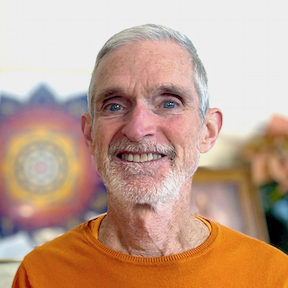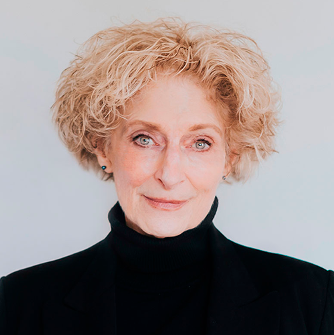A Spiritual Approach to a Troubled World
by Swami Ramananda
Many people I know are searching for ways to actively respond to the chaotic events unfolding in the U.S. and a world filled with violence, suffering, and injustice. We don’t want to see our Yoga practice as a retreat from the world, nor do we want to simply shake our heads and shrug our shoulders at the turmoil around us.
Often, we think of spiritual awakening as a passive practice—something that involves withdrawing the senses and quieting the mind to experience the spiritual presence within. While this is an important aspect of spiritual growth, it is equally vital to consider how we engage with the world. Both approaches are necessary, as we want our responses to the challenges we face to be guided by the source of spiritual wisdom we all share.
We may need to reconnect with this inner spiritual light repeatedly, awakening it fully so that it shines in our hearts and minds as we go about our days. However, we need not wait for a certain level of enlightenment before we take our Yoga practice off the cushion or mat and into the world. We can intentionally practice moving, speaking, and thinking with peace and compassion in our hearts.
This intention remains vague unless we find specific ways to cultivate it. We bring compassion into conversations when we listen deeply to others, making a real effort to understand and respect their needs. Even when we disagree, we can approach others with an open heart, focusing on common ground rather than our differences. We can speak out against injustice when we witness it and strive to be peacemakers in moments of conflict.
Above all, we can maintain our equanimity in the face of unjust or violent words or actions. By keeping our balance, we sustain a connection to an inner well of peace and bring that energy into the situation. Mindfulness allows us to pause and make conscious choices that consider the well-being of everyone involved.
We can also bring more compassion into the world by serving our local communities. Whether it’s offering Yoga classes, volunteering at a soup kitchen, becoming politically active, or reaching out to those in need, serving locally connects us to the needs and disharmony in our own neighborhoods, where we can truly make a difference. It compels us to look beyond our own worlds and reminds us that, beneath our differences, we all seek the same happiness. A grateful heart is naturally inclined to uplift others.
On a subtler level, Sri Swami Satchidananda strongly affirmed that each time we pray for peace in the world—such as we do at the end of each Integral Yoga class—we send subtle yet profound energies into our world. Even though we may not see the effects, each time we visualize peace in our hearts and intentionally send it outwards, our intentions have a real impact on those who are ready to receive them.
Every choice we make, every action we take, can be guided by either a ‘me’-centered or ‘we’-centered mindset. Understanding that our daily actions are an expression of our beliefs can transform our lives, giving meaning to every aspect of it. May we all learn to see how bringing spiritual values into everyday life is both a vital response to a violent world and an essential part of awakening our inner Light.
Join Marc Morozumi and me for a discussion on how we can make a difference together at a Satsang we will co-lead on Saturday, March 1, from 5:30 – 6:30 pm, entitled Responding Together to a World in Chaos. Sign up
 Swami Ramananda C-IAYT, E-RYT 500, is the Executive Director of the Integral Yoga Institute in San Francisco and a gr.eatly respected senior teacher in the Integral Yoga tradition, who has been practicing Yoga for over 45 years. Ramananda offers practical methods of integrating the timeless teachings and practices of Yoga into daily life, and transforming the painful aspects of human experience into steps toward realizing one’s full potential.
Swami Ramananda C-IAYT, E-RYT 500, is the Executive Director of the Integral Yoga Institute in San Francisco and a gr.eatly respected senior teacher in the Integral Yoga tradition, who has been practicing Yoga for over 45 years. Ramananda offers practical methods of integrating the timeless teachings and practices of Yoga into daily life, and transforming the painful aspects of human experience into steps toward realizing one’s full potential.
He leads all levels of Yoga teacher trainings and programs around the globe. Ramananda co-developed the Stress Management Teacher Training program and has trained many teachers to bring Yoga into corporate, hospital and medical settings. He a founding board member of Yoga Alliance and is a co-founder of The Spiritual Action Initiative which brings together individuals committed to working for social justice for all beings and for the care and healing of our natural world. His warmth, wisdom and sense of humor have endeared him to many.







 Deborah Kesten, MPH, is a nutrition researcher and award-winning author, specializing in the multidimensional power of food to heal. Her research career began as Nutritionist on Dean Ornish MD ‘s first clinical trial for reversing heart disease, which is an Integral Yoga-based lifestyle program inspired by IYI founder Swami Satchidananda. She also specializes in the health-and-healing benefits of ancient food wisdom from cultural traditions (such as Yogic Nutrition), world religions (Hinduism, etc.), and Eastern healing systems (such as India’s Ayurvedic Medicine), and in preventing and reversing overweight, heart disease, and other diet-linked chronic conditions.
Deborah Kesten, MPH, is a nutrition researcher and award-winning author, specializing in the multidimensional power of food to heal. Her research career began as Nutritionist on Dean Ornish MD ‘s first clinical trial for reversing heart disease, which is an Integral Yoga-based lifestyle program inspired by IYI founder Swami Satchidananda. She also specializes in the health-and-healing benefits of ancient food wisdom from cultural traditions (such as Yogic Nutrition), world religions (Hinduism, etc.), and Eastern healing systems (such as India’s Ayurvedic Medicine), and in preventing and reversing overweight, heart disease, and other diet-linked chronic conditions.